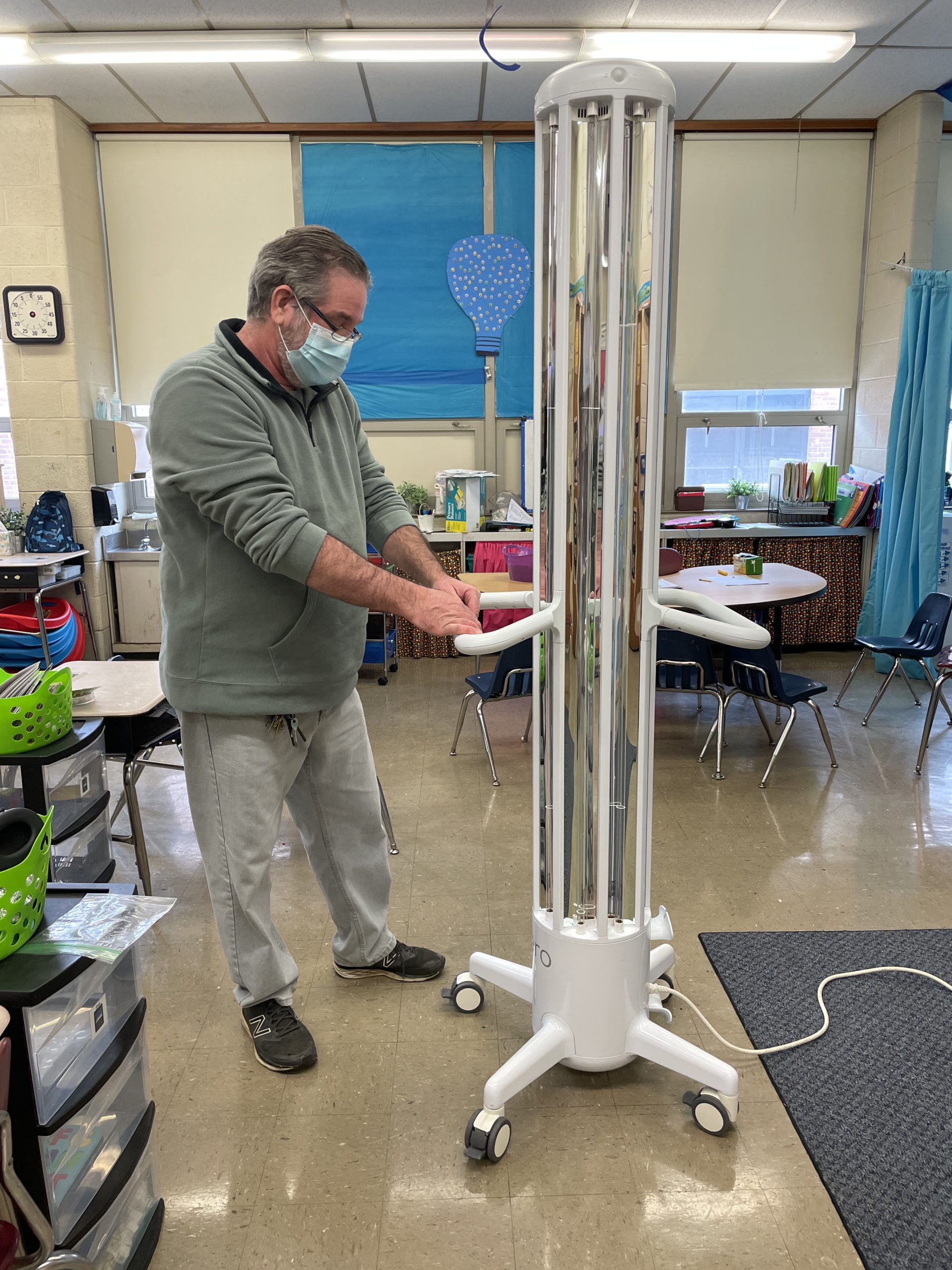UV-C ultraviolet lighting that has long disinfected hospitals has now become more affordable—and eligible for stimulus funds—as superintendents bolster their COVID-prevention toolkit to bring more students back.
Superintendent Lee Ann Wentzel used stimulus funding to purchase R-Zero’s Arc UV-C movable lighting units for the nine schools in the Ridley School District near Philadelphia, and has been using them to disinfect classrooms since January.
“I stay away from the phrase deep cleaning,” Wentzel says. “In my world, it’s clean or it’s not, it’s disinfected or it’s not.”
Bringing UV-C technology to her district hadn’t been feasible prior to R-Zero’s innovations because of the costs and the difficulties of installing them in some of her aging school buildings, she says.
Side-by-side comparison: ESSER, ESSER II, and ARP ESSER allowable activities
Now, the stand-alone lighting units can be wheeled from room to room, and all custodial staff and principals have been trained to operate them.
The district has divided elementary school students into morning and afternoon cohorts. Custodians now disinfect each classroom by running the UV-C units for seven minutes at lunch time.

Custodians also run the units each night. “The rooms are disinfected, and we haven’t used chemicals,” Wentzel says.
Most of the district’s elementary and middle school students have returned to in-person learning, and they’re wearing masks, social distancing and washing hand regularly, Wentzel says.
The UV-C units prevent the district from having to close a classroom for several days if a student or teacher tests positive for COVID.
UV-C light has been proven to kill over 99.99% of all pathogens including COVID-19, hepatitis, tuberculosis and influenza. R Zero’s Arc unit can disinfect air and surfaces in a 1,000-square-foot room in seven minutes, the company says on its website.
“We’re not seeing the spread in school, and we attribute that to all the mitigation factors we’ve put in place,” Wentzel says. “Our bigger concern is that a lot of these mitigation strategies are not continued outside school.”
Key piece of the puzzle
UV-C light can be an important part of a district’s COVID-prevent approach, which must start with extensive planning and assessment that covers not just disinfection techniques, but also communications strategies to get communities engaged in preventing the spread of the virus, says Dr. Paula Fujiwara, scientific director of the International Union Against Tuberculosis and Lung Disease and former deputy health commissioner of New York City.
More from DA: How pool testing can speed up reopening schools
UV-C fits into other facilities work, such as upgrading HVAC systems, making room for social distancing and controlling how students and staff move through school buildings, Fujiwara says.
Administrators purchasing UV-C lights must also make a plan for maintaining and operating the units.
“UV-C is not the only answer, but it can be part of the solution,” Fujiwara says. “UV-C has been neglected because of the cost but schools districts can start look at it.”







